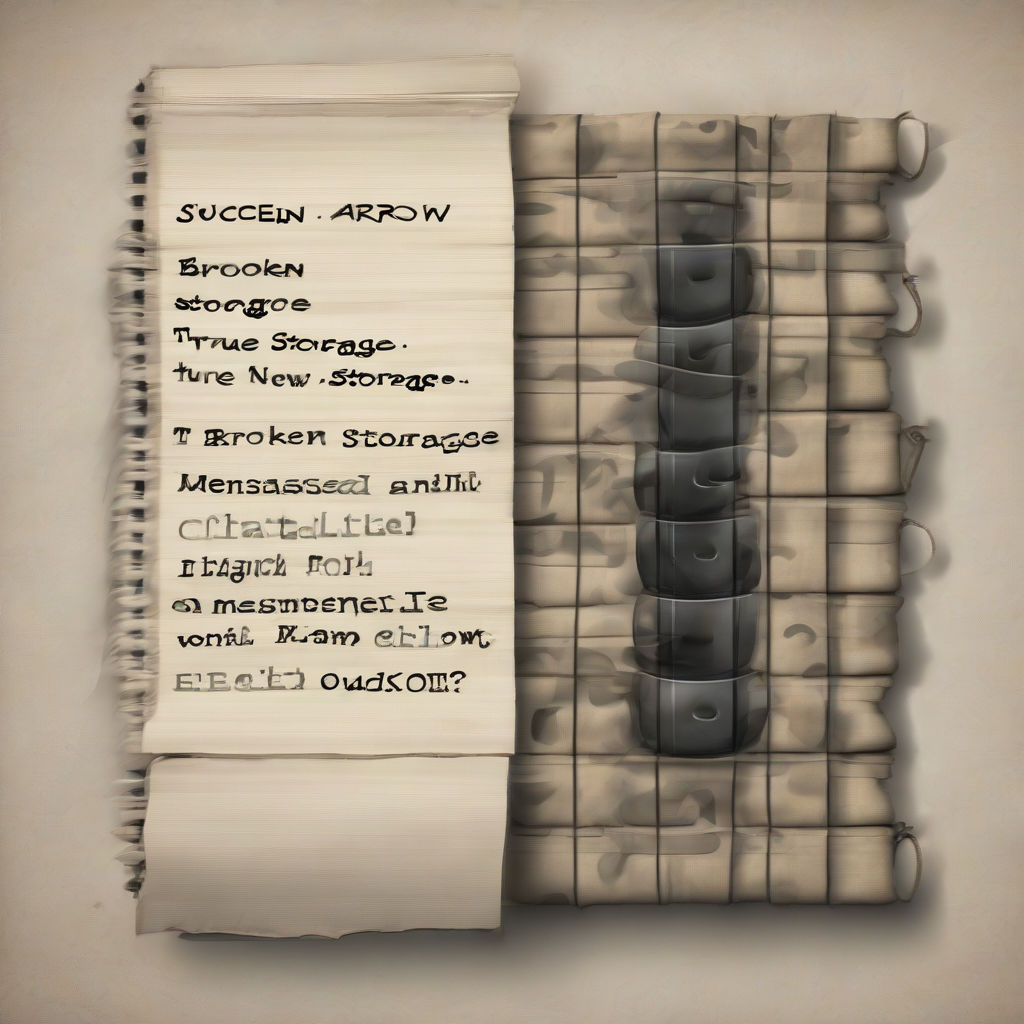Broken Arrow Storage: A Comprehensive Guide to Securely Managing Nuclear Weapons Incidents
A “Broken Arrow” incident, in military parlance, refers to an accident involving a nuclear weapon where there is no risk of nuclear detonation, but the weapon itself has been damaged or compromised. This necessitates specialized storage and handling procedures to mitigate the risks associated with the damaged weapon, its components, and potentially released radioactive materials.
This guide delves into the intricate world of Broken Arrow storage, exploring the various aspects involved in safely managing such events. We will cover the different types of Broken Arrow incidents, the immediate response procedures, the specialized storage facilities required, the long-term management strategies, and the crucial role of international collaboration in these high-stakes situations.
Types of Broken Arrow Incidents
Broken Arrow incidents are categorized based on the nature of the accident and the extent of the damage. While specific classifications vary between countries, some common types include:
- Accidental detonation of non-nuclear components: This might involve the detonation of conventional explosives within the weapon, potentially resulting in damage to the warhead and the release of radioactive materials.
- Accidental damage or loss of a nuclear weapon: This could range from minor damage during transportation or handling to a complete loss of the weapon, possibly due to a crash or fire.
- Weapon malfunction: A failure of internal systems, leading to a compromised state, but not necessarily resulting in immediate danger.
- Unauthorized access or theft: Though extremely rare, the possibility of unauthorized access or theft of a nuclear weapon necessitates robust security measures and protocols.
- Accidental release of radioactive materials: This scenario focuses on the leakage of radioactive materials from a damaged weapon, requiring immediate containment and remediation efforts.
Immediate Response Procedures
The immediate response to a Broken Arrow incident is paramount in preventing further escalation and minimizing potential harm. Key steps usually involve:
- Securing the area: Establishing a perimeter to prevent unauthorized access and protect emergency personnel.
- Assessing the damage: Determining the extent of the damage to the weapon and the potential risks involved.
- Containing radioactive materials: Employing specialized equipment and techniques to contain any released radioactive materials.
- Evacuating personnel: Removing personnel from the immediate vicinity to minimize exposure to radiation.
- Notification of authorities: Informing relevant national and international authorities, as per established protocols.
- Establishing communication channels: Ensuring clear communication pathways between response teams and authorities.
Specialized Storage Facilities
Broken Arrow storage necessitates specialized facilities designed to handle the unique challenges posed by damaged nuclear weapons. These facilities typically include:
- Radiation shielding: Thick concrete or lead shielding to protect personnel and the environment from radiation.
- Secure containment: Robust enclosures to prevent unauthorized access and the potential for further damage or theft.
- Environmental controls: Systems for monitoring and controlling temperature, humidity, and other environmental factors that could impact the weapon’s stability.
- Monitoring systems: Sophisticated monitoring systems to track radiation levels and other critical parameters.
- Specialized handling equipment: Remotely operated equipment to handle the damaged weapon and minimize human exposure to radiation.
- Waste management capabilities: Facilities for safely disposing of contaminated materials and debris.
Long-Term Management Strategies
The long-term management of Broken Arrow incidents involves a complex interplay of technical, political, and legal considerations. This often includes:
- Weapon dismantlement: Careful disassembly of the weapon under controlled conditions to recover usable components and safely dispose of hazardous materials.
- Radioactive waste disposal: Disposal of radioactive materials according to strict international regulations and safety standards.
- Environmental remediation: Cleaning up any contaminated areas to ensure the safety of the environment and the public.
- Data analysis and accident investigation: Thorough investigation of the incident to determine the cause and prevent future occurrences.
- Policy review and improvements: Reviewing existing policies and procedures to improve safety and security protocols.
- International cooperation: Collaboration with other nations to share best practices and lessons learned.
International Collaboration
International cooperation is crucial in managing Broken Arrow incidents, especially those involving transboundary implications. This collaboration typically focuses on:
- Information sharing: Sharing information about incident response protocols and best practices.
- Technical assistance: Providing technical support and expertise to countries experiencing Broken Arrow incidents.
- Joint training exercises: Conducting joint exercises to enhance interoperability and preparedness.
- Development of international standards: Collaborating to develop and implement international standards for the management of nuclear weapons incidents.
- Legal frameworks: Establishing legal frameworks for addressing transboundary implications of nuclear accidents.
- Transparency and accountability: Promoting transparency and accountability in the management of nuclear weapons incidents.
Challenges in Broken Arrow Storage
Managing Broken Arrow incidents presents several significant challenges:
- Technological complexities: The advanced technology of nuclear weapons requires specialized expertise and equipment for handling and storage.
- Radiation hazards: Exposure to radiation poses significant health risks to personnel involved in response and recovery efforts.
- Security concerns: Protecting the damaged weapon from theft or unauthorized access is crucial.
- Environmental risks: Preventing environmental contamination from radioactive materials is a primary concern.
- Political sensitivities: Broken Arrow incidents can have significant political ramifications, requiring careful handling and international cooperation.
- Resource constraints: Managing these incidents often requires substantial financial and logistical resources.
Future Trends in Broken Arrow Storage
The future of Broken Arrow storage will likely involve:
- Technological advancements: Development of new technologies for improved safety and security measures.
- Enhanced international cooperation: Strengthening international collaborations to improve global preparedness.
- Improved training and education: Providing more comprehensive training and education for personnel involved in incident response.
- Data-driven decision-making: Using data and analytics to improve incident response strategies.
- Focus on prevention: Emphasis on measures to prevent accidents and reduce the likelihood of Broken Arrow incidents.
- Sustainable waste management: Developing more sustainable and environmentally friendly methods for managing radioactive waste.

